U.S. military cemeteries in Europe

Bouquets of flowers decorate the memorial to Medal of Honor recipient Sgt. Alvin C. York in the French hamlet of Chatel Chehery. The 1941 movie “Sergeant York,” starring Gary Cooper, is based on the real-life hero’s acts of bravery during World War I. (Susan Spano / Los Angeles Times)

A sign marks the way to the recently opened trail in the Argonne Forest that follows Sgt. York’s heroic path near Chatel Chehery. (Susan Spano / Los Angeles Times)

The memorial to Sgt. Alvin C. York (1887-1964) honors his participation in the Meuse-Argonne offensive in which he killed 28 enemy soldiers and took 132 prisoners. (Susan Spano / Los Angeles Times)

Eifel National Park on the western border of Germany displays autumn’s beauty. But in World War II, during the early part of the Battle of the Bulge fought there, U.S. troops sustained heavy casualties. (Susan Spano / Los Angeles Times)
Advertisement

A vintage howitzer is displayed near the front of a restaurant at Parker’s Crossroads, near the village of St. Vith, Belgium. It marks the place where 500 U.S. troops resisted a German Panzer division for five crucial days during the Battle of the Bulge. (Susan Spano / Los Angeles Times)
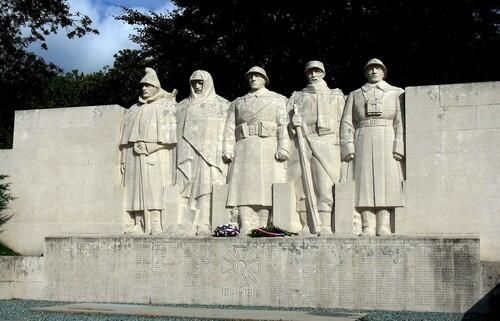
The Victory Monument in Verdun has a card catalog with the names of the war dead, including those of many American infantrymen. (Susan Spano/Los Angeles Times)

On Jan. 22, 1944, U.S. troops landed near the beach at Nettuno where the Sicily-Rome American Cemetery is located. Many who fought battles in the area are buried in the 77-acre graveyard, a 40-mile drive south from Rome. (Susan Spano/Los Angeles Times)

A historic photo in the visitor center at the Sicily-Rome cemetery captures a U.S. military ceremony at the site. (Susan Spano/Los Angeles Times)
Advertisement
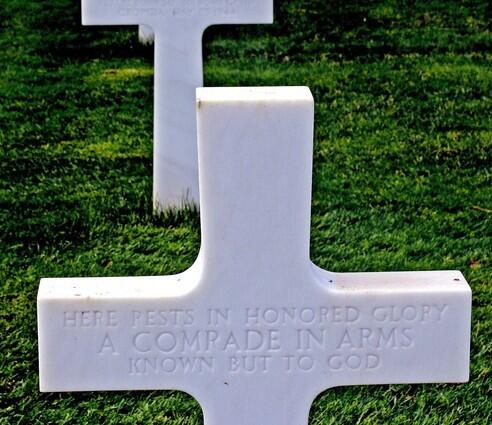
A grave marker for an unknown combatant, one of 488 such headstones at the Sicily-Rome American Cemetery. A list of 3,095 names of the missing are inscribed on the walls of the chapel. (Susan Spano/Los Angeles Times)
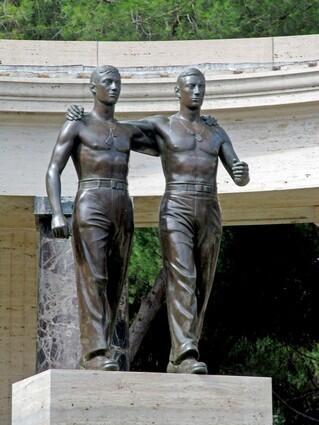
The “Brothers-in-Arms” bronze statue at the Sicily-Rome cemetery is by Paul Manship of
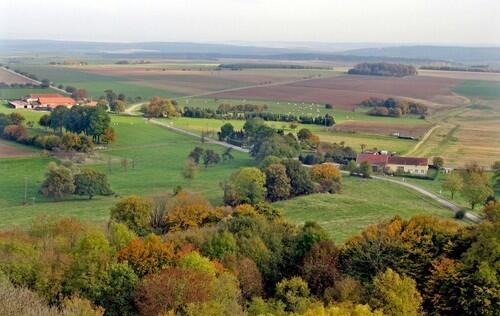
The French countryside around Montfaucon Hill is bucolic now, but it was the scene of an intense battle between German and U.S. troops in 1918. (Susan Spano/ Los Angeles Times)

The quaint town of Verdun on the Meuse River in eastern France is famous as a World War I battlefield. (Susan Spano/ Los Angeles Times)
Advertisement

The 57-acre Henri-Chapelle American Cemetery in Belgium, where 7,989 military personnel are buried, overlooks the Berwinne Valley, liberated by U.S. forces in 1944. (Susan Spano/ Los Angeles Times)

The Dragon Teeth tank obstacles that protected the German Siegfried Line are still visible in a cow pasture about five miles south of Aachen, Germany. (Susan Spano / Los Angeles Times)

Students walk among the crosses marking the graves at Henri-Chapelle American Cemetery. (Susan Spano / Los Angeles Times)
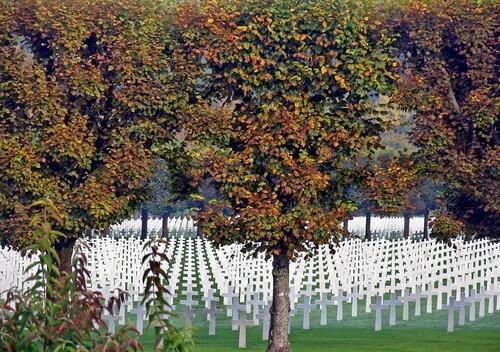
Linden trees border rows of crosses at Meuse-Argonne, the largest U.S. military cemetery in Europe. (Susan Spano / Los Angeles Times)
Advertisement

The Victory Monument in Verdun has a card catalog with the names of the war dead, including those of many American infantrymen. (Susan Spano / Los Angeles Times)



